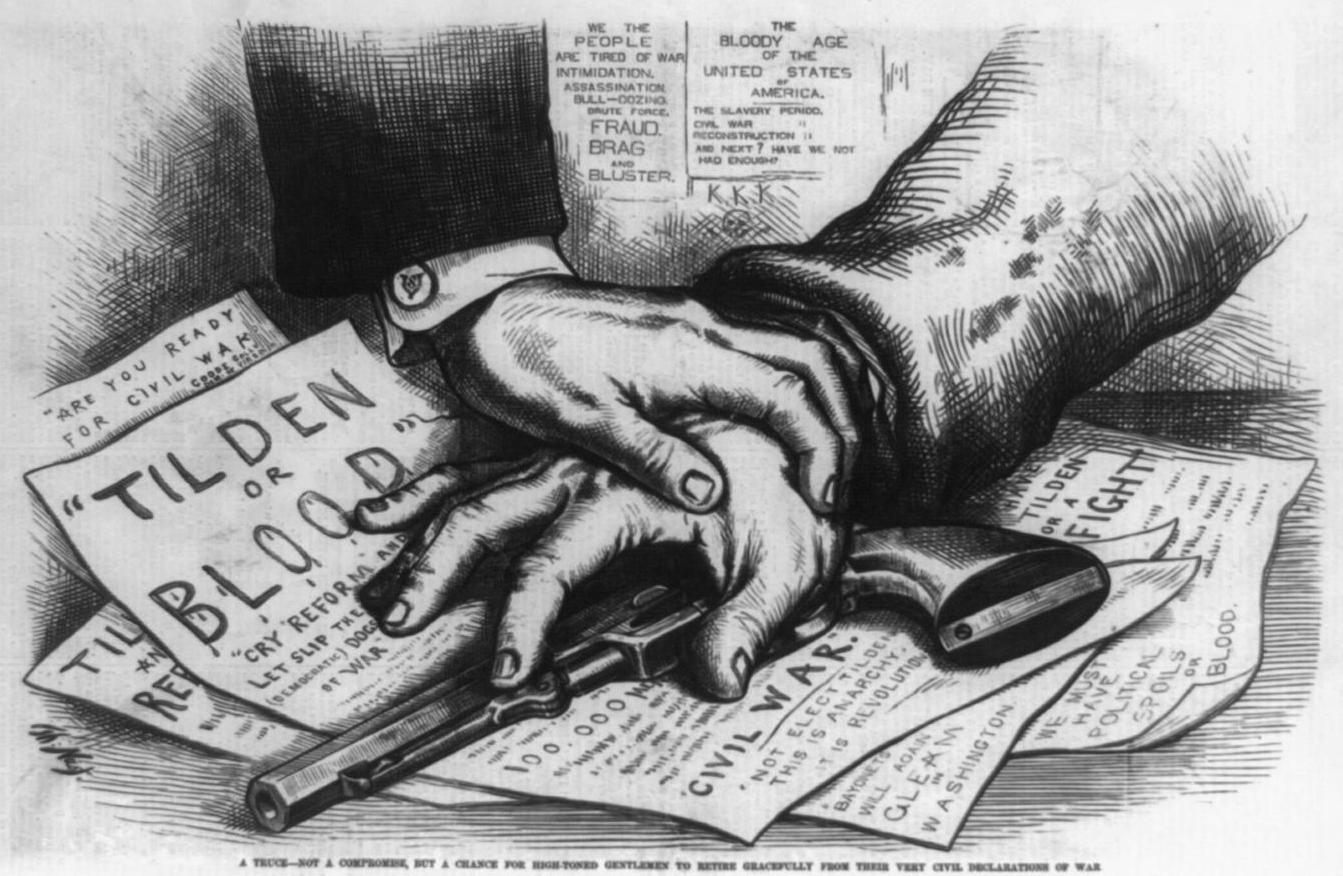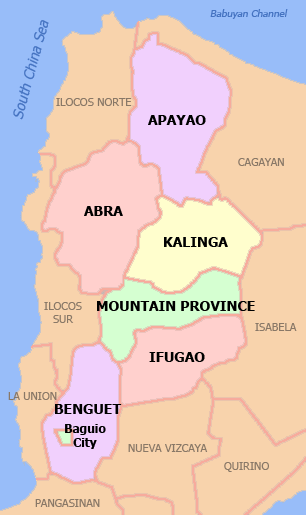|
Cordillera People’s Liberation Army
The Cordillera People's Liberation Army (CPLA) was a militant organization based in the Cordillera region in the Philippines founded by Conrado Balweg. Formation In 1986, the CPLA broke away from the communist New People's Army (NPA), criticizing the latter for its incompetence in pursuing its goals. The formation of the CPLA also saw the merger of the Tingguian Liberation Force, a splinter group from NPA Abra to form the Cordillera organization. Their goal was to fight for the self-determination of the people of Cordillera. Mount Data Peace Accord In September 13, 1986, the CPLA and the Government of the Philippines made a "''sipat''" ( ceasefire) at Mt. Data Hotel, in Bauko, Mountain Province Mountain Province is a landlocked province of the Philippines in the Cordillera Administrative Region in Luzon. Its capital is Bontoc. Mountain Province was formerly referred to as ''Mountain'' in some foreign references. The name is usually short .... The agreement between ... [...More Info...] [...Related Items...] OR: [Wikipedia] [Google] [Baidu] |
Conrado Balweg
Conrado Balweg was a former Filipino Catholic priest and rebel who was the founder of the Cordillera People’s Liberation Army, a militant group which advocated autonomy for the Cordillera region in the Philippines. He was also known by the ''nom-de-guerre'' Ka Ambo. Career Balweg, a member of the Tingguian people, was ordained a priest of the Society of the Divine Word congregation by Pope Paul VI in 1970 during the latter's pastoral visit to Manila. He joined the New People's Army in 1979 when he was inspired to fight for the Cordillera people after tribal leader Macli-ing Dulag was killed that same year. Dulag was opposed to a plan of the government to build a hydroelectric dam in the Cordilleras. In the early 1980s, the Armed Forces of the Philippines had tagged Balweg as its most-wanted man with a bounty of . As an NPA member, he was part of the Lumbaya Company. Balweg formed the Cordillera People’s Liberation Army (CPLA) in 1986 with fellow priest, Bruno Ortega. U ... [...More Info...] [...Related Items...] OR: [Wikipedia] [Google] [Baidu] |
Bauko, Mountain Province
Bauko, officially the Municipality of Bauko is a 4th class municipality in the province of Mountain Province, Philippines. According to the 2020 census, it has a population of 32,021 people. Bauko is from the provincial capital Bontoc and from Manila. History Chico River Dam Project Bauko was one of several municipalities in Mountain Province which would have been flooded by the Chico River Dam Project during the Marcos dictatorship, alongside Bontoc, Sabangan, Sadanga, Sagada, and parts of Barlig. However, the indigenous peoples of Kalinga Province and Mountain Province resisted the project and when hostilities resulted in the murder of Macli-ing Dulag, the project became unpopular and was abandoned before Marcos was ousted by the 1986 People Power Revolution. Geography Barangays Bauko is politically subdivided into 22 barangays, divided into the upper and lower areas. These barangays are headed by elected officials: Barangay Captain, Barangay Council, whose member ... [...More Info...] [...Related Items...] OR: [Wikipedia] [Google] [Baidu] |
Rebel Groups In The Philippines
A rebel is a participant in a rebellion. Rebel or rebels may also refer to: People * Rebel (given name) * Rebel (surname) * Patriot (American Revolution), during the American Revolution * American Southerners, as a form of self-identification; see Southern United States * DJ Rebel (born 1984), or simply Rebel, Belgian DJ * Johnny Reb, or Johnny Rebel, the national personification of the Southern states of the United States * In professional wrestling: **Rebel (wrestler), American professional wrestler ** Rockin Rebel, American professional wrestler ** The Rebel, a nickname for American professional wrestler Dick Slater Organizations and brands * Rebel (company), a sport equipment retailer in Australia and New Zealand * Rebel (entertainment complex), an entertainment complex in Toronto, Ontario, Canada * Rebel (Denmark), a Danish youth organization * Murphy Rebel, an airplane model by Murphy Aircraft * REBEL (chess), a chess program * Rebel (train), a type of train * Reaching Ever ... [...More Info...] [...Related Items...] OR: [Wikipedia] [Google] [Baidu] |
Military Units And Formations Established In 1986
A military, also known collectively as armed forces, is a heavily armed, highly organized force primarily intended for warfare. It is typically authorized and maintained by a sovereign state, with its members identifiable by their distinct military uniform. It may consist of one or more military branches such as an army, navy, air force, space force, marines, or coast guard. The main task of the military is usually defined as defence of the state and its interests against external armed threats. In broad usage, the terms ''armed forces'' and ''military'' are often treated as synonymous, although in technical usage a distinction is sometimes made in which a country's armed forces may include both its military and other paramilitary forces. There are various forms of irregular military forces, not belonging to a recognized state; though they share many attributes with regular military forces, they are less often referred to as simply ''military''. A nation's military may f ... [...More Info...] [...Related Items...] OR: [Wikipedia] [Google] [Baidu] |
Armed Forces Of The Philippines
The Armed Forces of the Philippines (AFP) ( fil, Sandatahang Lakas ng Pilipinas) are the military forces of the Philippines. It consists of three main service branches; the Army, the Air Force, and the Navy (including the Marine Corps). The President of the Philippines is the Commander-in-Chief of the AFP and forms military policy with the Department of National Defense, an executive department acting as the principal organ by which military policy is carried out, while the Chief of Staff of the Armed Forces of the Philippines serves as the overall commander and the highest-ranking officer in the AFP. Founded under the National Defense Act of 1935, while tracing its roots to the Philippine Revolutionary Army, the AFP has played an integral part in the country's history. The AFP has also been involved in various conflicts, such as combatting rebellion against the Communist Party of the Philippines (CPP) and it's attached organizations, the New People's Army (NPA) and the Nati ... [...More Info...] [...Related Items...] OR: [Wikipedia] [Google] [Baidu] |
Mountain Province
Mountain Province is a landlocked province of the Philippines in the Cordillera Administrative Region in Luzon. Its capital is Bontoc. Mountain Province was formerly referred to as ''Mountain'' in some foreign references. The name is usually shortened by locals to ''Mt. Province''. The province was named so for being in the Cordillera Central mountain range found in the upper realms of Luzon island. Mountain Province was also the name of the historical province that included most of the current Cordillera provinces. This old province was established by the Philippine Commission in 1908, and was later split in 1966 into Mountain Province, Benguet, Kalinga-Apayao and Ifugao. The province is also known for its mummy caves, which contain naturally mummified bodies, and for its hanging coffins. History Spanish period The area of the Cordillera mountains proved difficult to control by the Spaniards. During the long Spanish rule, not much was done to bring the province under con ... [...More Info...] [...Related Items...] OR: [Wikipedia] [Google] [Baidu] |
Ceasefire
A ceasefire (also known as a truce or armistice), also spelled cease fire (the antonym of 'open fire'), is a temporary stoppage of a war in which each side agrees with the other to suspend aggressive actions. Ceasefires may be between state actors or involve non-state actors. Ceasefires may be declared as part of a formal treaty, but also as part of an informal understanding between opposing forces. They may occur via mediation or otherwise as part of a peace process or be imposed by United Nations Security Council resolutions via Chapter VII of the United Nations Charter. The immediate goal of a ceasefire is to stop violence, but the underlying purposes of ceasefires vary. Ceasefires may be intended to meet short-term limited needs (such as providing humanitarian aid), manage a conflict to make it less devastating, or advance efforts to peacefully resolve a dispute. An actor may not always intend for a ceasefire to advance the peaceful resolution of a conflict, but instead gi ... [...More Info...] [...Related Items...] OR: [Wikipedia] [Google] [Baidu] |
Cordillera Autonomy Movement
The Cordillera autonomy movement in the Philippines refers to the campaign for greater autonomy for the Cordilleras. The 1986 Constitution allows for the establishment of two autonomous regions in the country; Muslim Mindanao and in the Cordilleras. Two plebiscites (1990 and 1998) were conducted in the Cordillera to legalize the autonomous status of the area where majority of the voters rejected autonomy. The area is currently under the jurisdiction of the Cordillera Administrative Region. There are still efforts from some local sectors to establish an autonomous region in the Cordillera. Background During the Spanish colonial era, the Spaniards referred to the inhabitants of the Cordilleras as the ''Ygorrottes'' or the Igorots while the Americans starting 1908 have governed the area as part of a single locality called as the Mountain Province. People from outside the region, or the lowlanders as they are known in the Cordillera, often referred all ethnic people in the area un ... [...More Info...] [...Related Items...] OR: [Wikipedia] [Google] [Baidu] |
Government Of The Philippines
The Government of the Philippines ( fil, Pamahalaan ng Pilipinas) has three interdependent branches: the legislative, executive, and judicial branches. The Philippines is governed as a unitary state under a presidential representative and democratic constitutional republic in which the president functions as both the head of state and the head of government of the country within a pluriform multi-party system. The powers of the three branches are vested by the Constitution of the Philippines in the following: Legislative power is vested in the two-chamber Congress of the Philippines—the Senate is the upper chamber and the House of Representatives is the lower chamber. Executive power is exercised by the government under the leadership of the president. Judicial power is vested in the courts with the Supreme Court of the Philippines as the highest judicial body. Legislative branch The legislative power is vested in the Congress of the Philippines which consists of the S ... [...More Info...] [...Related Items...] OR: [Wikipedia] [Google] [Baidu] |
Self-determination
The right of a people to self-determination is a cardinal principle in modern international law (commonly regarded as a ''jus cogens'' rule), binding, as such, on the United Nations as authoritative interpretation of the Charter's norms. It states that peoples, based on respect for the principle of equal rights and fair equality of opportunity, have the right to freely choose their sovereignty and international political status with no interference. The concept was first expressed in the 1860s, and spread rapidly thereafter. During and after World War I, the principle was encouraged by both Soviet Premier Vladimir Lenin and United States President Woodrow Wilson. Having announced his Fourteen Points on 8 January 1918, on 11 February 1918 Wilson stated: "National aspirations must be respected; people may now be dominated and governed only by their own consent. 'Self determination' is not a mere phrase; it is an imperative principle of action." During World War II, the princip ... [...More Info...] [...Related Items...] OR: [Wikipedia] [Google] [Baidu] |



